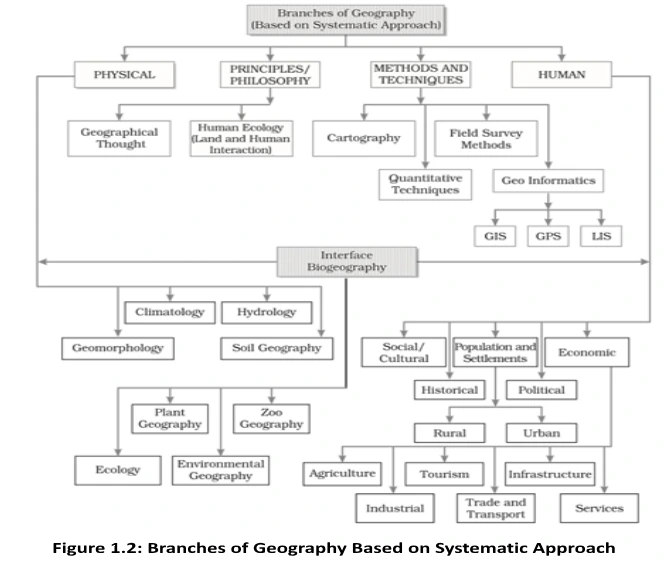![]() 25 Nov 2023
25 Nov 2023
Geography is a multifaceted field, with several distinct branches of Geography, each focusing on specific aspects of our planet. These branches of Geography include physical geography, human geography, and environmental geography. Each branch explores diverse aspects of Earth’s landscapes, societies, and environmental processes.
Geography as an interdisciplinary subject: Revealing Systemic and Regional Approaches in Geography Studies


The interface between physical geography and human geography has led to the development of Biogeography which includes:

Regional Analysis has two aspects which are common to this discipline, these are:
(i) Philosophy
(ii) Methods and Techniques
The knowledge is fundamental for addressing environmental challenges, such as climate change, deforestation, and habitat loss. Understanding of Physical geography is essential for sustainable development and better resource management. Physical geography’s importance lies in its contribution to environmental conservation, resource management, disaster preparedness, scientific advancement, and informed decision-making. It plays a pivotal role in addressing global challenges and improving the quality of life on Earth.
Glossary
|
<div class="new-fform">
</div>